The black widow spider is scientifically named Latrodectus, with about 32 known species from different countries. Widely believed to have landed on Earth about 300 million years ago, the black widow spider is known for its dangerously sharp fangs and glossy black and red body.
Black widow spiders are very interesting species; hence, we have curated a list of some of the most riveting facts about them.
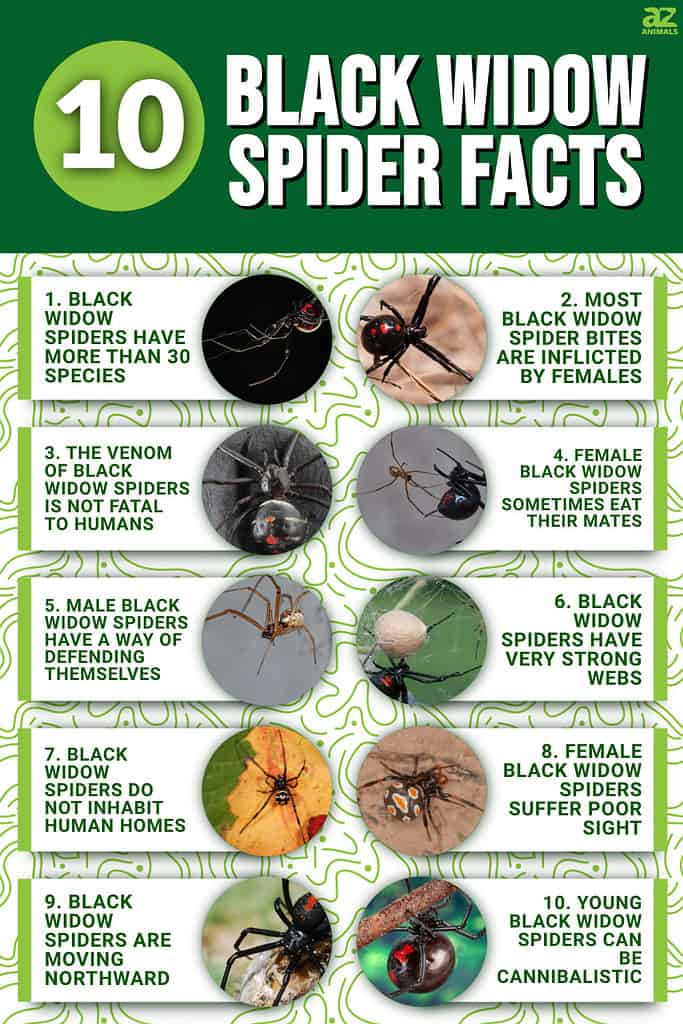
1. Black Widow Spiders Have More Than 30 Species
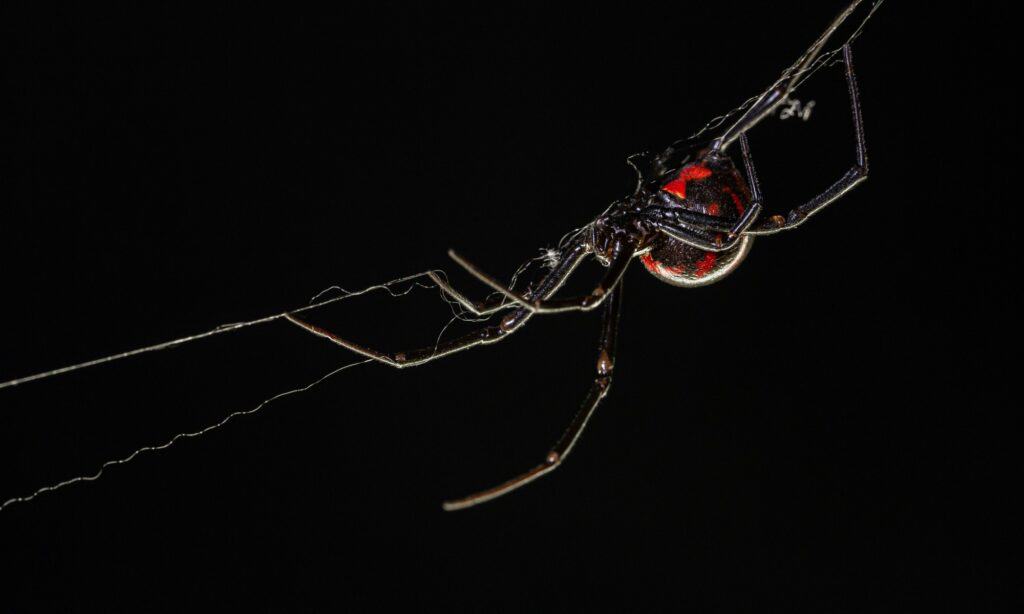
There are about 32 known species of black widow spiders.
©iStock.com/AmericanWildlife
As mentioned earlier, there are about 32 known species of black widow spiders, and quite interestingly, they aren’t always black. There are brown-colored widow spiders as well as red-colored ones. They also have varying shapes, and frankly, that’s to be expected from a genus with over 30 species.
In North America, there are three species, namely, southern black widows (Latrodectus mantans), northern black widows (Latrodectus variolus), and western black widows (Latrodectus hesperus). The Latrodectus hasseltii is commonly found in Australia and is called the redback spider.
The latest black widow spider species to be discovered is the South African Latrodectus umbukwane in 2019. Will there be more discoveries? That remains to be seen.
2. Most Black Widow Spider Bites Are Inflicted By Females
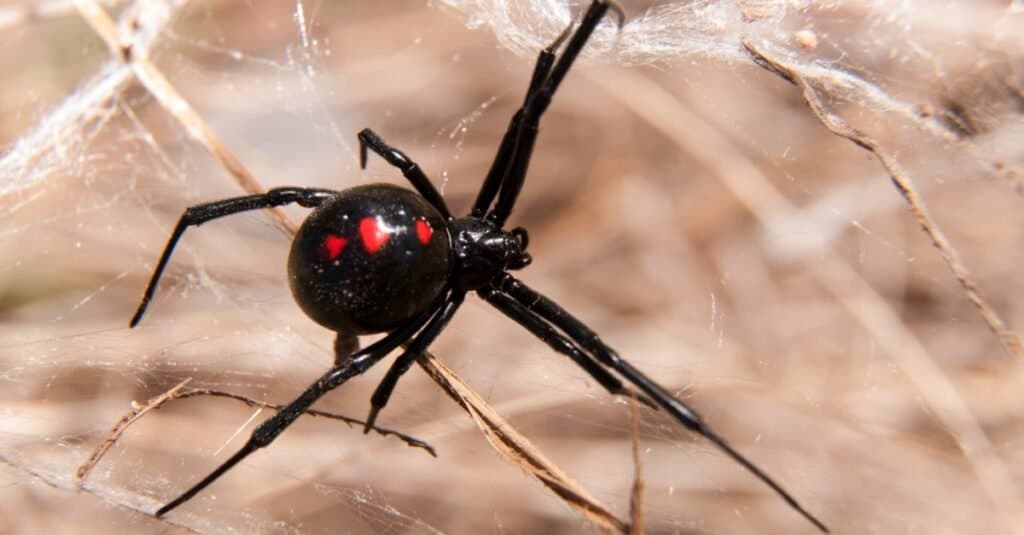
Female black widows are more dangerous than males because they are larger and inject more venom.
©Sari ONeal/Shutterstock.com
Virtually everyone knows that black widow spiders are inherently venomous. However, most of the medically concerning black widow bites throughout history are attributed to adult female black widow spiders. That definitely tracks, considering female black widow spiders are much larger than their male counterparts. Their venom is much stronger, and their bites are more effective. Some experts even believe male black widow spiders do not bite at all. This is almost similar to what’s obtainable in mosquitos – their males do not suck blood or transmit diseases, as these actions are restricted to females.
3. The Venom Of Black Widow Spiders Is Not Fatal To Humans
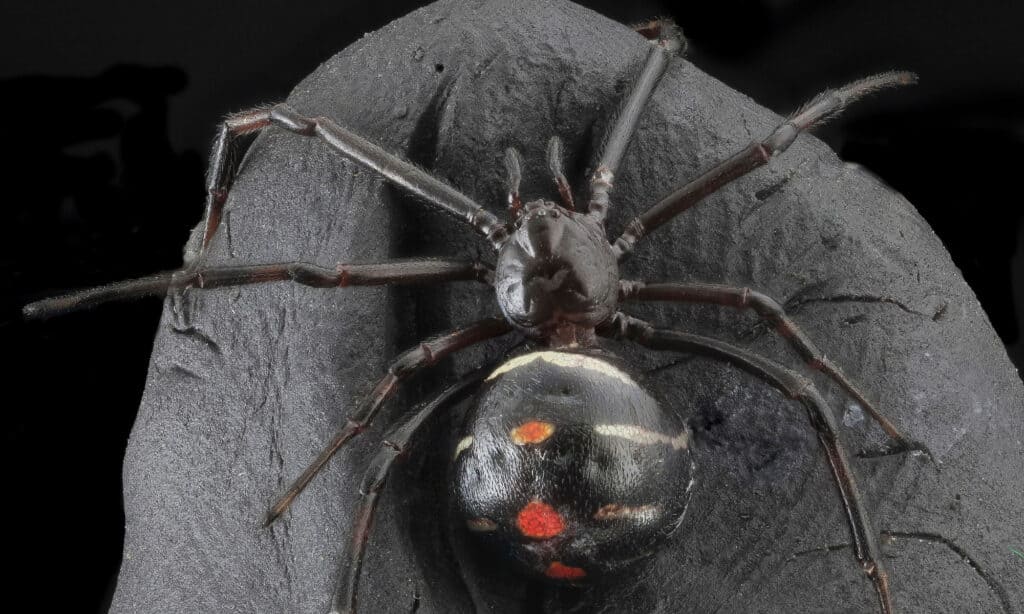
Unlike other black widows, northern black widows have a broken hourglass-shaped marking on their abdomens
©Porco_Rosso/Shutterstock.com
Adult female black widow spiders have a very toxic but non-fatal venom. They are known for releasing neurotoxins that are powerful enough to cause excruciating pain, muscle cramps, hypertension, and weakness, but not death. As a matter of fact, of the over 2,000 black widow bites recorded yearly in the United States, there hasn’t been a fatal outcome, not in the 21st century, at least.
4. Female Black Widow Spiders Sometimes Eat Their Mates
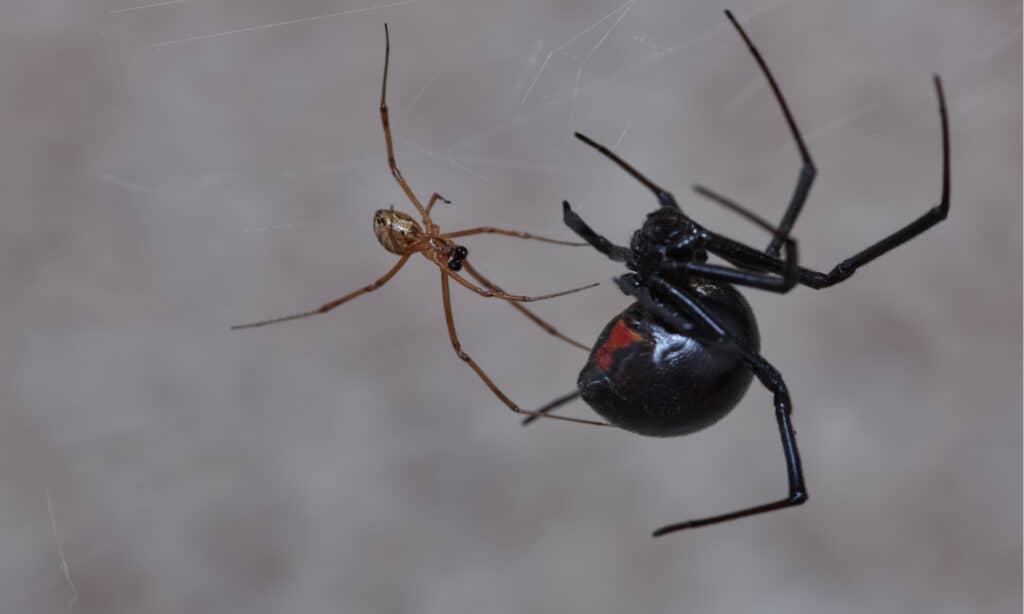
Female black widow spiders sometimes murder their mates once mating is done.
©lighTTrace Studio/Shutterstock.com
We mentioned earlier that adult female black widows have more ferocious bites and venom than their male counterparts. Besides that, female black widow spiders also sometimes murder their mates once mating is done. That trait is why “black widow” in colloquial terms refers to a woman who has killed her lover.
However, we must also mention that this does not happen as often as you think. As a matter of fact, reports reveal that mate eating has never occurred on record among North American species in the wild. It has however been reported during lab tests, and scientists say it’s because the male cannot escape in such situations.
5. Male Black Widow Spiders Have A Way Of Defending Themselves
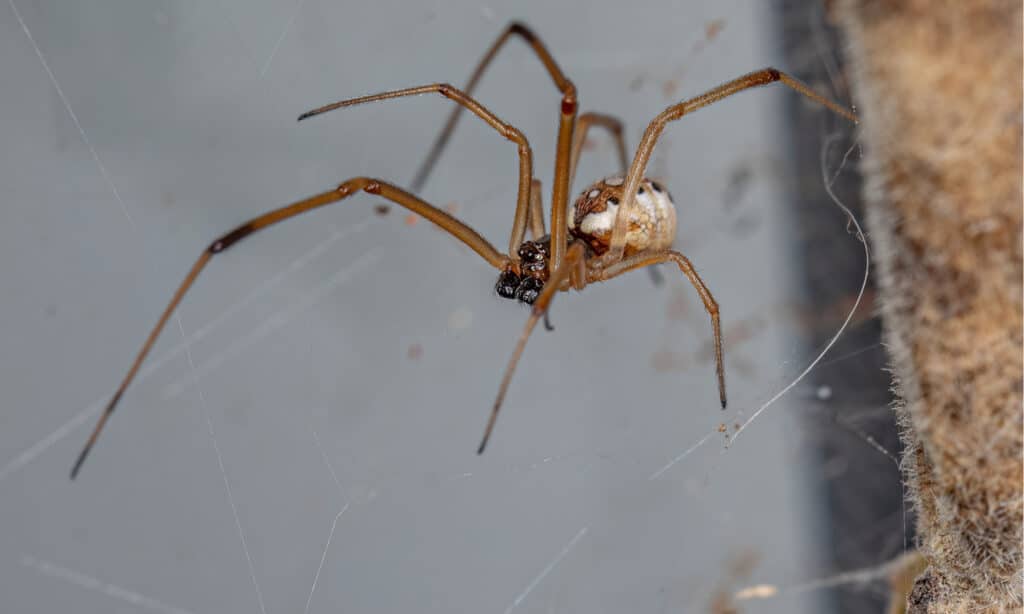
Male black widow spiders intentionally look for properly fed female black widows to mate with in a bid to avoid being eaten.
©Vinicius R. Souza/Shutterstock.com
While we have established that sexual cannibalism amongst black widow spiders is not very common, male black widows take no chances. A study revealed that male black widow spiders intentionally look for properly fed female black widows to mate with. They do this with the aid of females’ pheromones, all in a bid to avoid being eaten. Pretty smart move!
Besides the pheromones strategy, male black widows also send vibrations through the female web as a way of stating clearly that they are only available for mating.
In addition, some studies suggest that other than avoiding a post-mating murder, male black widows also seek well-fed females in order to father healthier offspring.
6. Black Widow Spiders Have Very Strong Webs
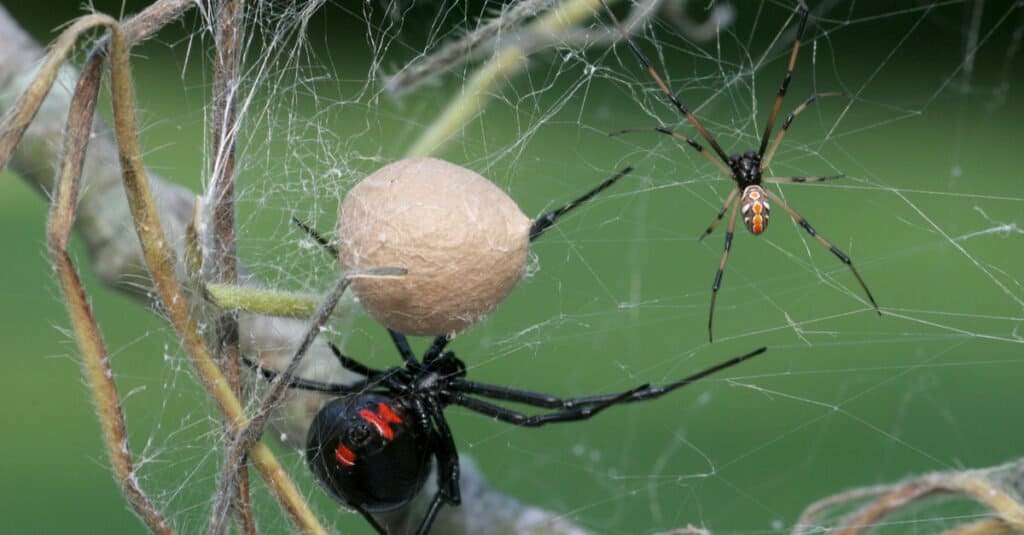
Black widows are adept producers of insanely strong silk webs.
©Mark_Kostich/Shutterstock.com
Black widows are adept producers of insanely strong silk web, and the strength of these webs are a result of the tons of quality properties present in them. The web silk’s strength is so amazing that even researchers are trying to create a prototype of it for synthetic materials. While this has not yielded any gainful results just yet, some experts believe there will be a breakthrough eventually, which could revolutionize the strength and durability of plastics, bridge materials, and fabrics.
7. Black Widow Spiders Do Not Inhabit Human Homes
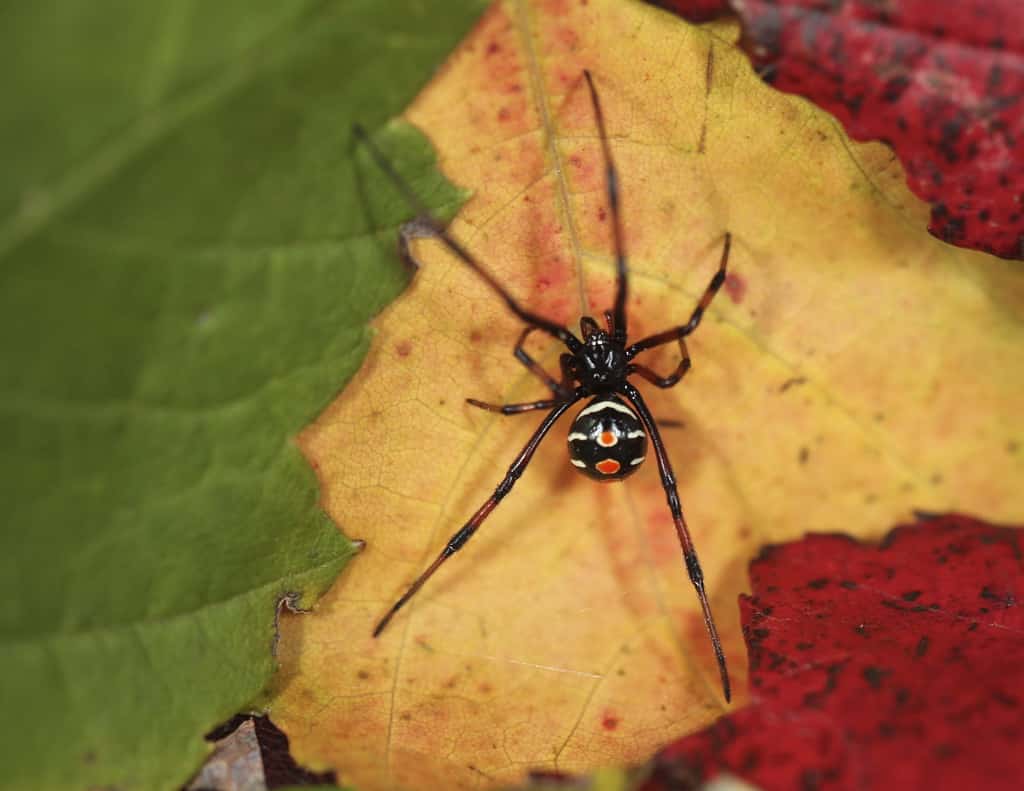
Black widow spiders prefer to be outdoors amidst woodlands, temperate forests, piles of wood, as well as outdoor garages and basements.
©iStock.com/NajaShots
For a long time, certain spiders have been observed to inhabit human homes, and they even spin their webs around. However, black widows are not among such spiders, and from everything we have just learned about them, it’s a good thing they are not. They prefer to be outdoors amidst woodlands, temperate forests, piles of wood, as well as outdoor garages and basements. So, while they would generally not get into the house, they are suckers for outhouses, and one should be careful of them.
8. Female Black Widow Spiders Suffer Poor Sight
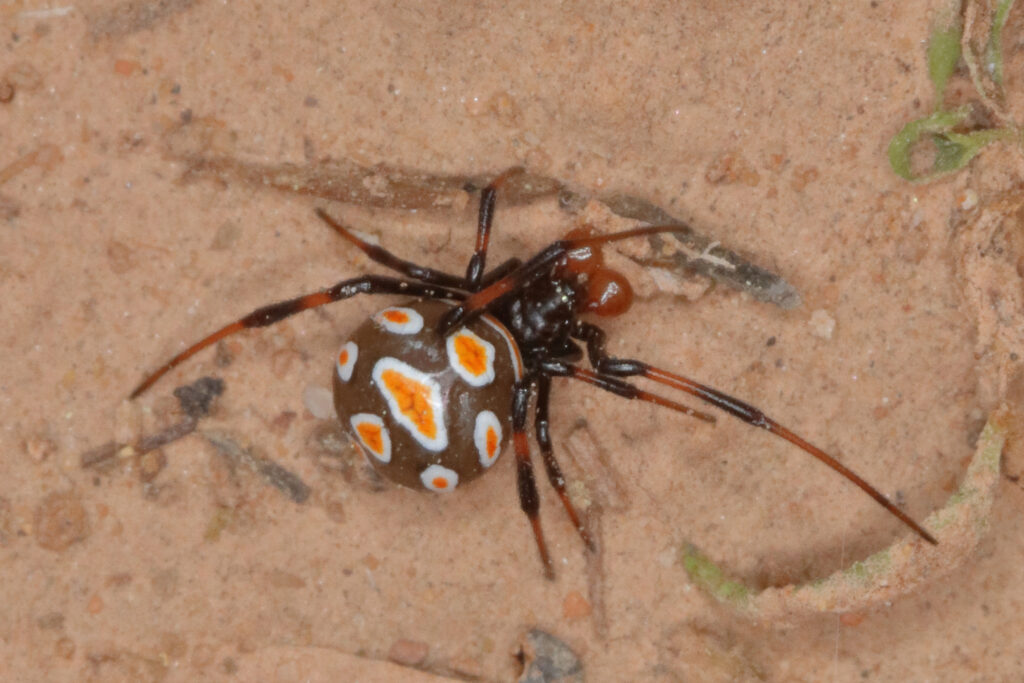
The European black widow, sometimes called the Mediterranean black widow, often rely on their silk webs to get a peep into what’s going on around them.
©iStock.com/Frank Buchter
As much as they are the dominant gender in the world of black widows, adult female black widow spiders suffer egregious eyesight. They often rely on their silk webs to get a peep into what’s going on around them. The webs are often extensions of their hideouts, and they are notified of prey/predator presence when they feel a vibration.
Male black widow spiders jump on this opportunity to get nasty by cutting and rearranging the females’ web so as to cut off their sensibilities and thereafter approach them for a mating session.
9. Black Widow Spiders Are Moving Northward
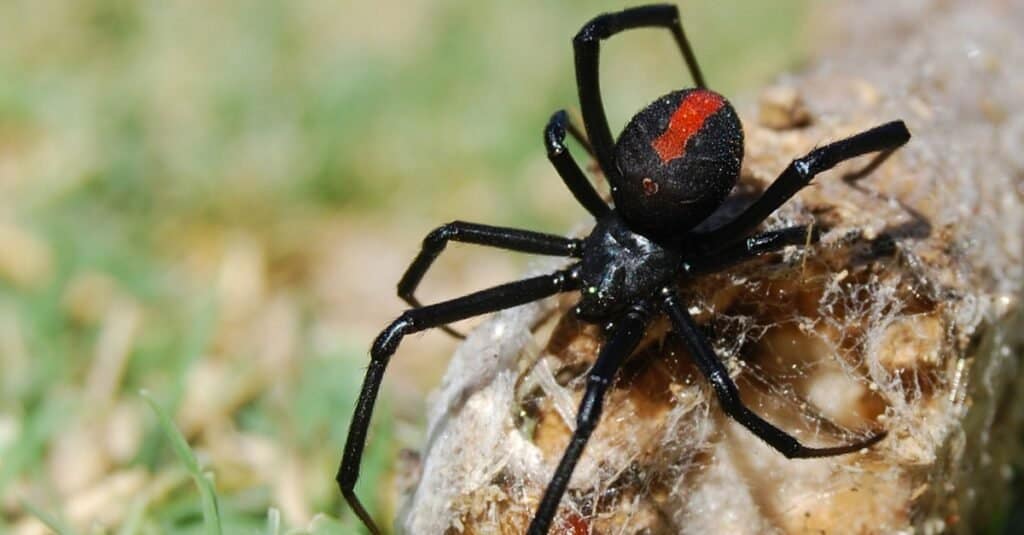
Due to climate change, there has been an unlikely move northward by black widow spiders.
©iStock.com/maria72
In the United States and across the North American continent, black widow spiders are mostly found in the South and the South West. However, due to climate change, there has been an unlikely move northward. There is a detailed study by Canadian researchers that states that the northernmost range of black widow spiders has increased by up to 31 miles in the last 55-60 years.
10. Young Black Widow Spiders Can Be Cannibalistic
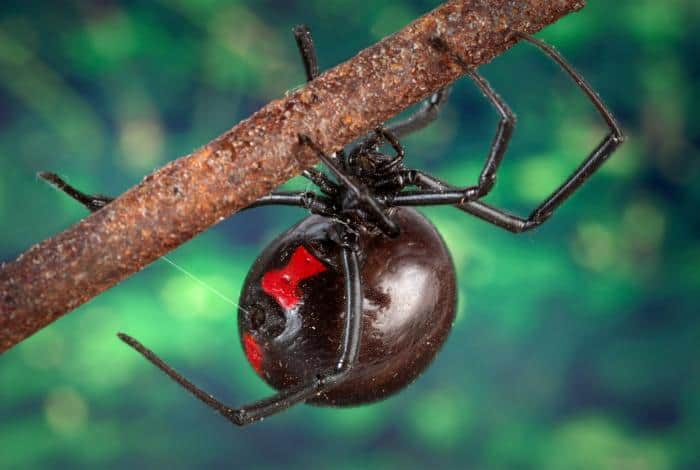
Scientists have observed that the largest hatchlings among the spiderlings would sometimes stealthily eat up the smallest ones.
Female black widow spiders can produce up to 300 spiderlings in one go, with the average litter size being 250. They are often hatched together, and scientists have observed that the largest among them would sometimes stealthily eat up the smallest ones. However, experts believe this only happens when the spiderlings come in various sizes, meaning there would be no occasion for cannibalism where the siblings are all of equal sizes.
The photo featured at the top of this post is © Porco_Rosso/Shutterstock.com
Thank you for reading! Have some feedback for us? Contact the AZ Animals editorial team.







